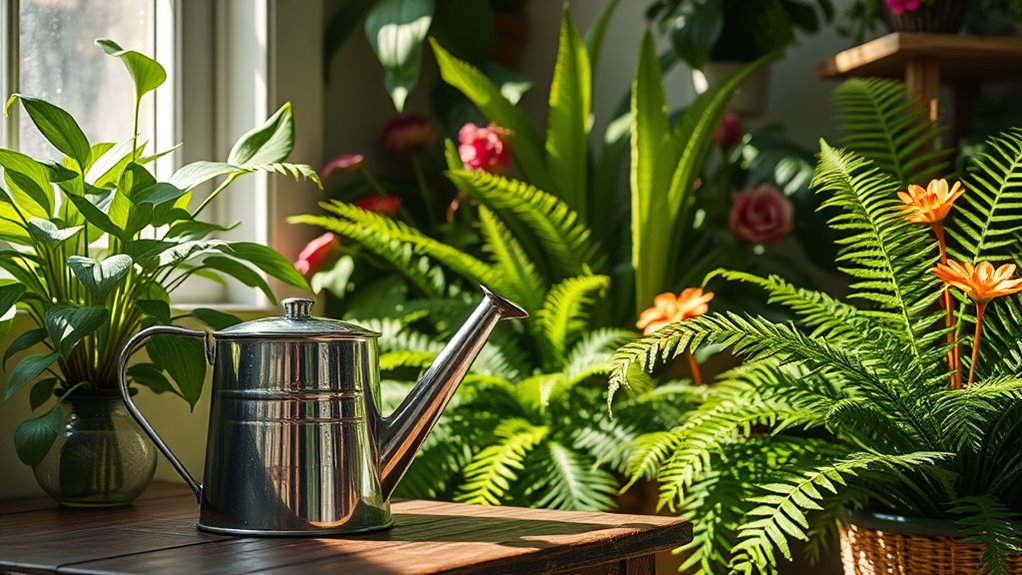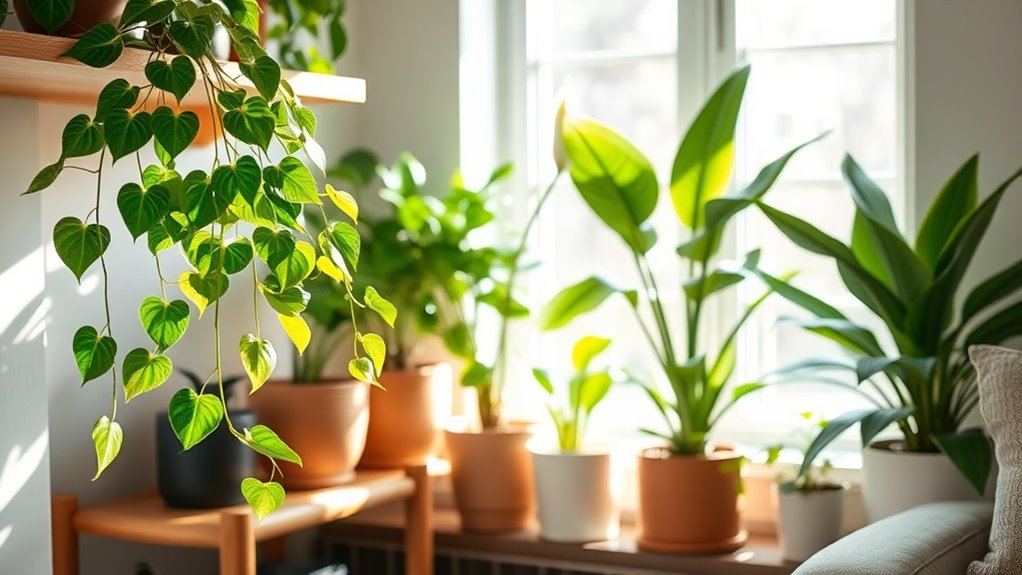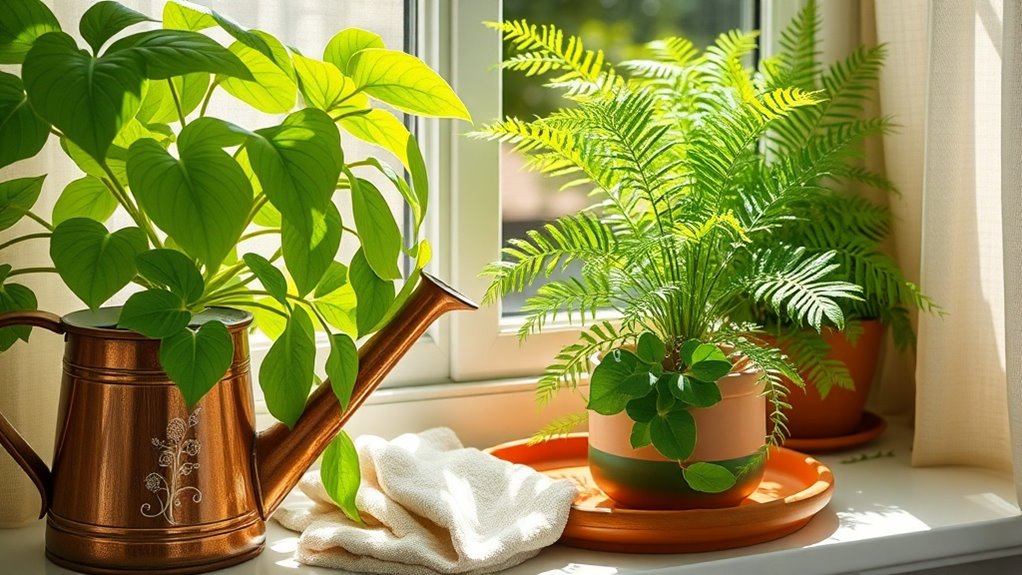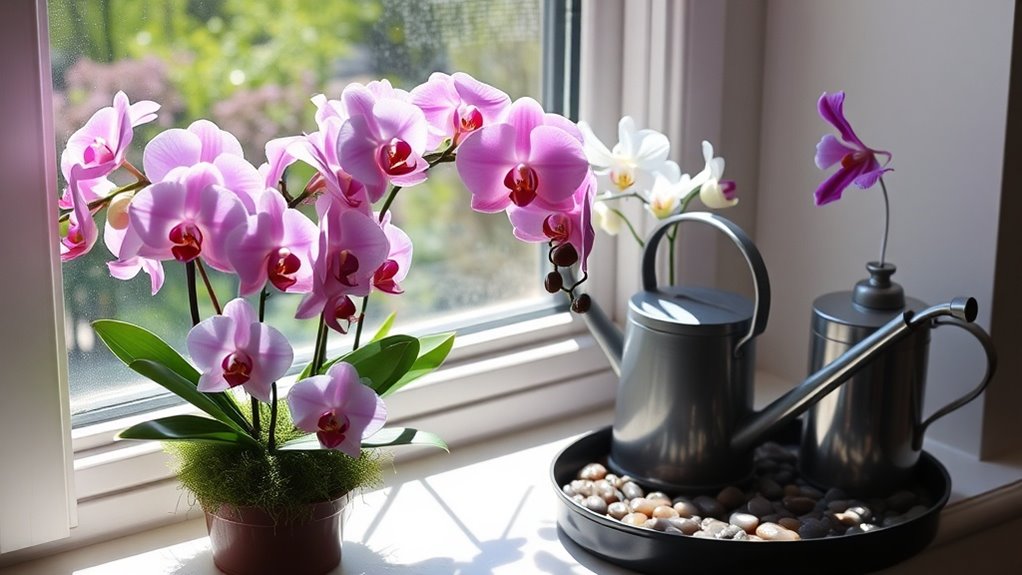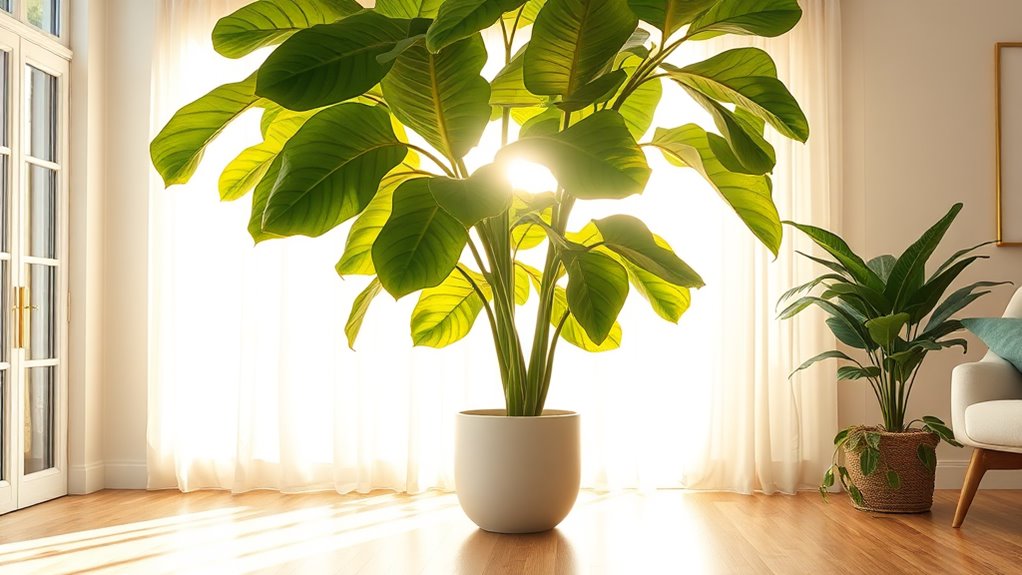This Indoor Plant Watering Routine Made All the Difference
Imagine your once-thriving peace lily suddenly wilting, the vibrant leaves now drooping helplessly. You might think it’s just a phase, but it could signal deeper issues—often linked to watering habits. Establishing a thoughtful watering routine is crucial for plant health. As you consider your approach, you’ll discover how vital it is to understand your plants’ water needs and adjust your care accordingly. How do you ensure your green companions thrive throughout the seasons?
Understanding Your Plants’ Water Needs
Understanding your plants’ water needs is crucial for their health and vitality. Each species requires specific moisture levels, so pay attention to their signs.
If leaves droop or turn yellow, it might be thirst or overwatering. Regularly check the soil’s moisture, and remember that proper indoor plant care includes adjusting water based on light, humidity, and temperature conditions to thrive beautifully. Additionally, expert watering techniques can help prevent common mistakes that lead to over or underwatering.
Establishing a Consistent Watering Schedule
While many factors influence your plants’ health, establishing a consistent watering schedule is key to their growth.
Start by determining how often your plants need water—weekly, biweekly, or monthly. Mark it on your calendar or set reminders.
This routine not only ensures your plants receive the hydration they crave but also helps you notice any changes in their health promptly. Additionally, considering the impact of extreme heat on watering can help you adapt your schedule to keep your plants thriving even in scorching conditions.
Tips for Measuring Soil Moisture
To keep your indoor plants thriving, knowing how to measure soil moisture is essential.
Stick your finger an inch into the soil; if it feels dry, it’s time to water. Alternatively, use a moisture meter for accuracy.
Remember, different plants have different needs, so observe and adjust accordingly. Overwatering can lead to common overwatering mistakes that diminish your plants’ health.
With these tips, you’ll ensure your plants stay happy and healthy.
Seasonal Adjustments to Your Routine
As the seasons change, so do the watering needs of your indoor plants.
During warmer months, increased light and heat can dry out soil quickly, so you’ll need to water more frequently.
In contrast, winter’s coolness can slow growth, requiring less water.
Pay attention to humidity levels too; dry air can affect moisture retention, so adjust accordingly for thriving plants year-round. Additionally, understanding seasonal strategies can help optimize your indoor plant care throughout the year.
Signs of Overwatering and Underwatering
Understanding how to adjust your watering routine based on seasonal changes is vital, but recognizing the signs of overwatering and underwatering is just as important for your indoor plants’ health.
If leaves turn yellow or wilt, you might be overwatering. Conversely, crispy edges or drooping leaves indicate underwatering.
Regularly check the soil’s moisture to keep your plants thriving and happy. Implementing effective recovery techniques can help revive overwatered plants and restore their vitality.

